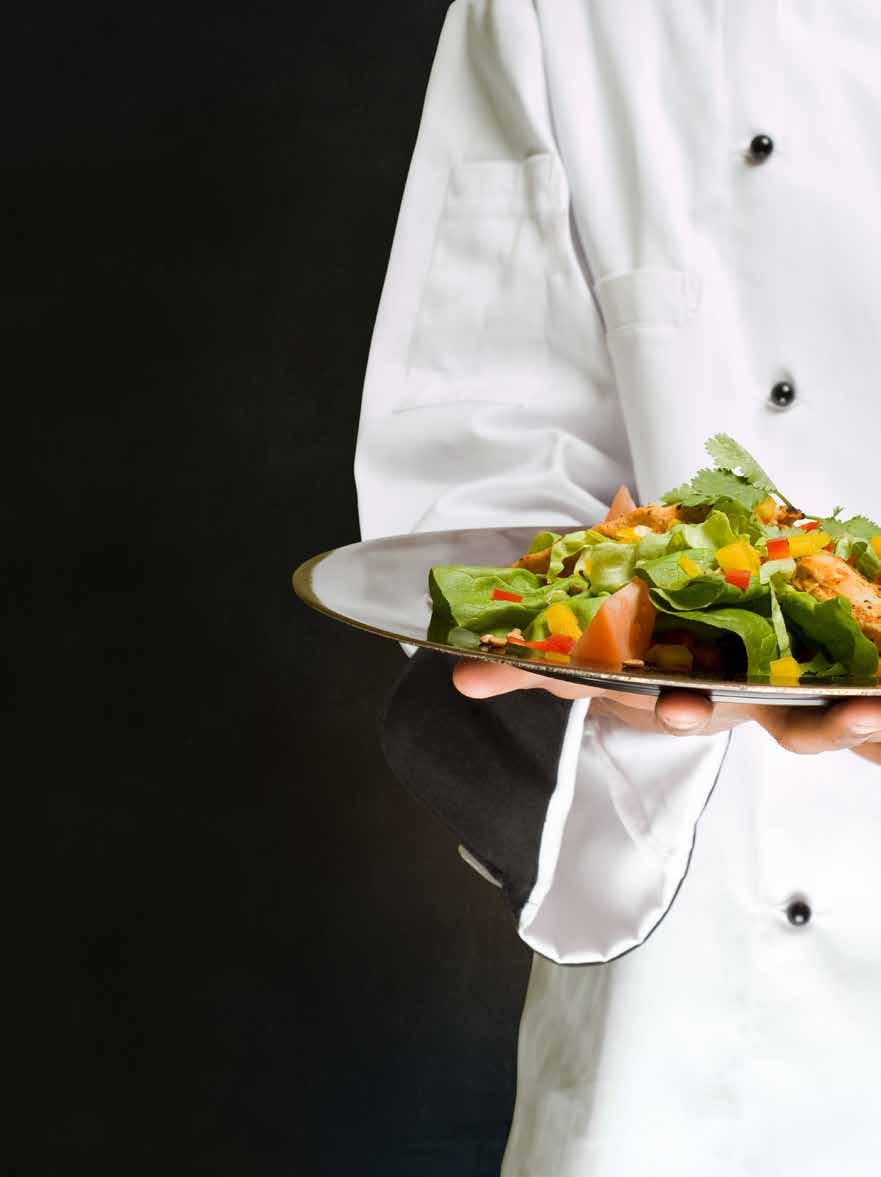




With an abundance of distinctive quality, authenticity and heritage, Wales has a long and proud tradition of producing outstanding food and drink. Delicious, natural ingredients are grown and gathered from its landscapes and shores by skilled and dedicated communities of farmers and fishers.





EDITORIAL
EDITOR: Nicola Monteath nicola.monteath@cpimediagroup.com
ASSISTANT EDITOR: Blanche D’mello blanche.dmello@cpimediagroup.com
ADVERTISING
GROUP SALES DIRECTOR: Liz Smyth liz.smyth@cpimediagroup.com
SALES DIRECTOR: Gill Fairclough gill.fairclough@cpimediagroup.com
SALES DIRECTOR: Carol Owen carol.owen@cpimediagroup.com
SALES DIRECTOR: Lara Gambardella lara.gambardella@cpimediagroup.com
prochef.sales@cpimediagroup.com
DESIGN Froilan A. Cosgafa IV FOR OTHER ENQUIRIES, PLEASE VISIT: www.theprochefme.com
FOUNDER CPI MEDIA GROUP Dominic De Sousa (1959-2015)
PRINTED BY Al Salam Printing Press LLC
PUBLISHED BY
Head Office: Office 1307, DSC Tower, Dubai Studio City, Dubai, United Arab Emirates, PO Box 13700 Tel: +971 4 568 2993 Email: info@cpimediagroup.com
A publication licensed by Dubai Production City, DCCA
In this edition, we explore the dynamic intersection of the culinary world, entrepreneurship, and innovation, offering you a glimpse into the ever-evolving world of gastronomy. Explore the journey of Maher ElTabchy, the founder of Tabchilli, whose Dubaibased startup spotlights artisanal fermented foods. Take a peek into 24 hours with Chef Jolbi Huacho and explore two chefs’ signature specials and the art of curating these dishes.

This edition also brings you the muchanticipated unveiling of Chef Yannick Alléno's latest venture, L'Abysse, at the prestigious Hôtel Hermitage Monte-Carlo. Discover how our cover star champions zero-waste dining while celebrating the finest Mediterranean produce. Additionally, we delve into the innovative work of Chef Muhamad Noer Abdi at TÕRI, where Japanese tradition meets modern culinary flair. As we broaden our scope, Michelin-starred chef and entrepreneur Conrad Gallagher shares his insights on how chefs today are transcending the kitchen, becoming influential brand visionaries and reshaping the culinary landscape with their creative business acumen. Additionally, Lily Hoa Nguyen, Co-Founder & Executive Chef at Vietnamese Foodies uncovers how brands are harnessing technology to personalise marketing and enhance customer engagement. Finally, join us on a journey through the historic city of Aigues-Mortes and the vivid pink salt marsh with La Baleine, and discover how the brand elegantly transitions from the marsh to the table.
Happy reading.
© Copyright 2024 CPI Media Group FZ LLC. All rights reserved.
While the publishers have made every effort to ensure the accuracy of all information in this magazine, they will not be held responsible for any errors therein.
www.cpimediagroup.com
Editor
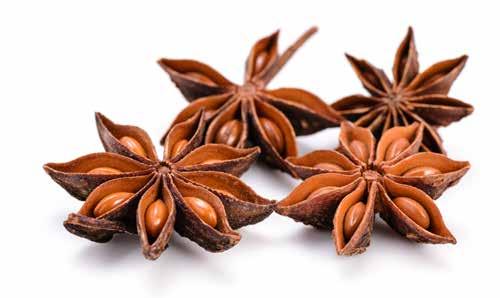


04 NEWS BITES
Culinary news across the Middle East
06 DINING IN THE UAE
Explore the latest menu creations and hotspots
08 24 HOURS WITH Jolbi Huacho, Head Chef at CLAY and Sushiyaki Dubai
10 MEET THE MAKER
Maher El-Tabchy, the founder of Tabchilli, shares insights from his entrepreneurial journey
13 THE CHEF AS AN ENTREPRENEUR
Conrad Gallagher explores blending culinary art with business
16 REBUILDING BRAND LOYALTY
Owner and Executive Chef at Vietnamese Foodies addresses common F&B mistakes and offers strategies for improvement
20 L'ABYSSE MONTE-CARLO UNVEILED
A glimpse into Yannick Alléno's latest opening, L'Abysse Monte-Carlo
26 INSIDE THE ART OF FUSION
Chef Muhamad Noer Abdi on combining his Indonesian roots with Japanese cuisine at TÕRI
29 THE LEGACY OF LA BALEINE
Explore La Baleine, a centuries-old tradition from Aigues-Mortes
33 ROOTED IN TRADITION
Chef-owner Amin Ebra of Iranish shares his signature recipes
37 FLAVOUR FUSIONS
The Jeddah EDITION presents two exclusive summer recipes by Chef Cédric Vongerichten


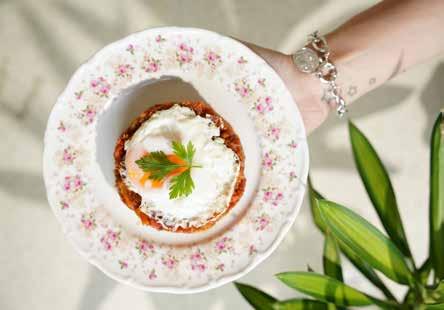


Koni Kim, originally from South Korea, brings a wealth of experience to her new role. Previously the Director of Food & Beverage at The Ritz-Carlton Yacht Collection, she managed multiple restaurants and bars on the inaugural EVRIMA, and was instrumental in launching the one MICHELIN star Knife & Spoon at The Ritz-Carlton, Orlando Grande Lakes. At The Ritz-Carlton, Doha, she will build on the success of renowned dining venues such as STK Doha, Sel & Miel, and B-Lounge, continuing to offer innovative and memorable dining experiences.


Six Senses Zighy Bay, the renowned ecofriendly resort located in Oman’s stunning Musandam Peninsula, is pleased to announce the appointment of Swiss national Walter Butti as its new Executive Chef. With an impressive career spanning the Maldives, Ghana, Sydney, Switzerland, South Africa, Mauritius, and the United States, Chef Butti brings extensive experience, including his notable tenure at Six Senses Yao Noi in Thailand. There, he earned top accolades and developed a deep understanding of the Six Senses brand, making him an ideal fit for Zighy Bay. Chef Butti plans to enhance the resort's culinary offerings with expanded farm-to-table initiatives and a new concept for the dining destination, Sense on the Edge, set to be unveiled in Q4.
Taj Jumeirah Lakes Towers in Dubai is delighted to welcome Elena Schwartz as its new General Manager. With 20 years of experience in the hospitality industry, including roles at The Oberoi Beach Resort, Shangri-La, Rixos Hotels, Deutsche Hospitality, and Radisson, Elena brings a wealth of expertise to the position. She will concentrate on enhancing community experiences, upgrading food and drink offerings, and promoting female leadership, with the aim of establishing the hotel as a top choice for business in Dubai.

The XPRIZE Feed the Next Billion competition, focused on finding innovative protein alternatives, is concluding its final phase in Abu Dhabi after four years of intense development. With a US $15 million prize pool, the competition evaluates entries
based on factors like taste, sustainability, and resemblance to traditional proteins. From over 350 initial entries, six finalist teams will present their solutions this month, aiming to address the global need for sustainable food sources as the world’s population grows.

CAFÉ

World-renowned chef Daniel Boulud will open Café Boulud Riyadh at Four Seasons Hotel Riyadh later in 2024, marking his debut in Saudi Arabia and his second venture in the region. Located on the hotel’s Lobby level, the café will offer a menu celebrating Lyon's culinary traditions, using both local and imported ingredients. The restaurant will feature dishes created in collaboration with executive chef Nicolas Lemoyne, inspired by themes such as classic French cuisine, seasonal specials, vegetables, and global flavours, honouring the legacy of the original Café Boulud from Chef Boulud’s family farm in Lyon.

DISCOVER THE LATEST MENU ADDITIONS AND LAUNCHES IN THE COUNTRY
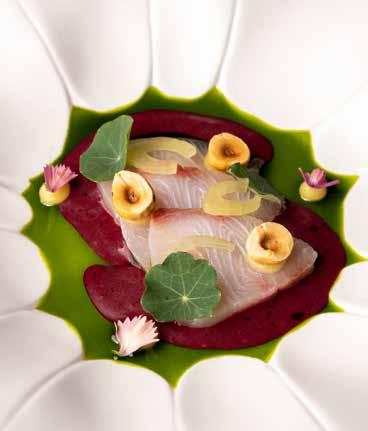
Chef Solemann Haddad and his team at Moonrise, the renowned 12-seater chef's table in Satwa, have unveiled a new 12-course menu that masterfully combines Middle Eastern and Japanese flavours with a touch of 90s Dubai nostalgia. This updated offering introduces inventive dishes such as Market prawns (Gambero Rosso, Toum-ranch, Pedro Ximenez, Dill) and Roots (tomato, zaatar & nori furikake, house labnah), while keeping beloved classics such as Explosion and the nowfamous Grilled cheese. To complement the dining experience, guests can indulge in expertly curated grape pairings or opt for creative concoctions.
Visit moon-rise.xyz.

At Qabu by Paco Morales at The Link, chefs Paco Morales and Paola Gualandi have teamed up to create two exciting menus that put a modern spin on ancient Andalusian recipes. Diners are in for a treat, as each dish takes you on a flavour-packed journey back to the Al Andalus era, where the vibrant Arab culture mixed with southern Spain’s rich traditions—it’s history served with a side of culinary flair.
AED 695 per person for Qurtuba five-course chef’s menu and AED895 per person for The Al Andalus seven-course chef’s menu. Visit thelinkdubai.com/qabu.

Debuting at the Dubai Marina Beachfront, the new destination promises to blend Ibiza’s legendary festival-level shows with high-energy experiences in a luxurious setting. Launching in October 2024, the venue will feature world-class DJs, immersive performances, and an elevated restaurant offering panoramic views and a Mediterranean-inspired menu with an Asian twist.
Visit obeachdubai.com.
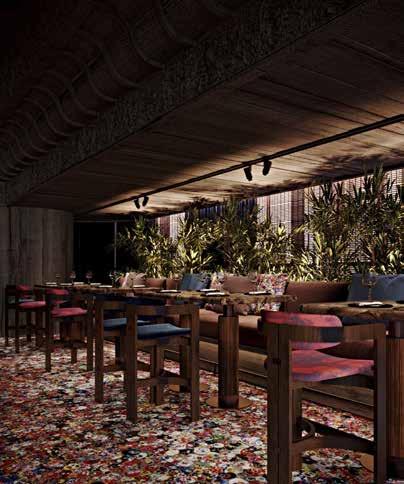
Opening this autumn at The Lana PromenadeDorchester Collection, the venue is set to offer a unique fusion of Japanese and Pan-Asian flavours in a vibrant, market-inspired menu. Signature dishes include the celebrated Beijing duck and the Bikini sandwich with otoro and black caviar, complemented by an extensive selection of beverages. The interior design combines traditional Asian elements with hyper-modern aesthetics, creating an immersive dining experience that transitions into a lively, elegant after-dinner setting with stunning views of the Dubai skyline.
Visit dragonfly-dxb.com.
The two-Michelin-starred restaurant invites culinary enthusiasts to engage in an immersive fine dining experience through an exclusive cooking lesson. Ideal for both novices and seasoned food lovers, this opportunity allows guests to learn and master sophisticated French techniques and recipes.
Every week, from Tuesday to Sunday. From AED1,100 per person. Contact +9714 440 1010.

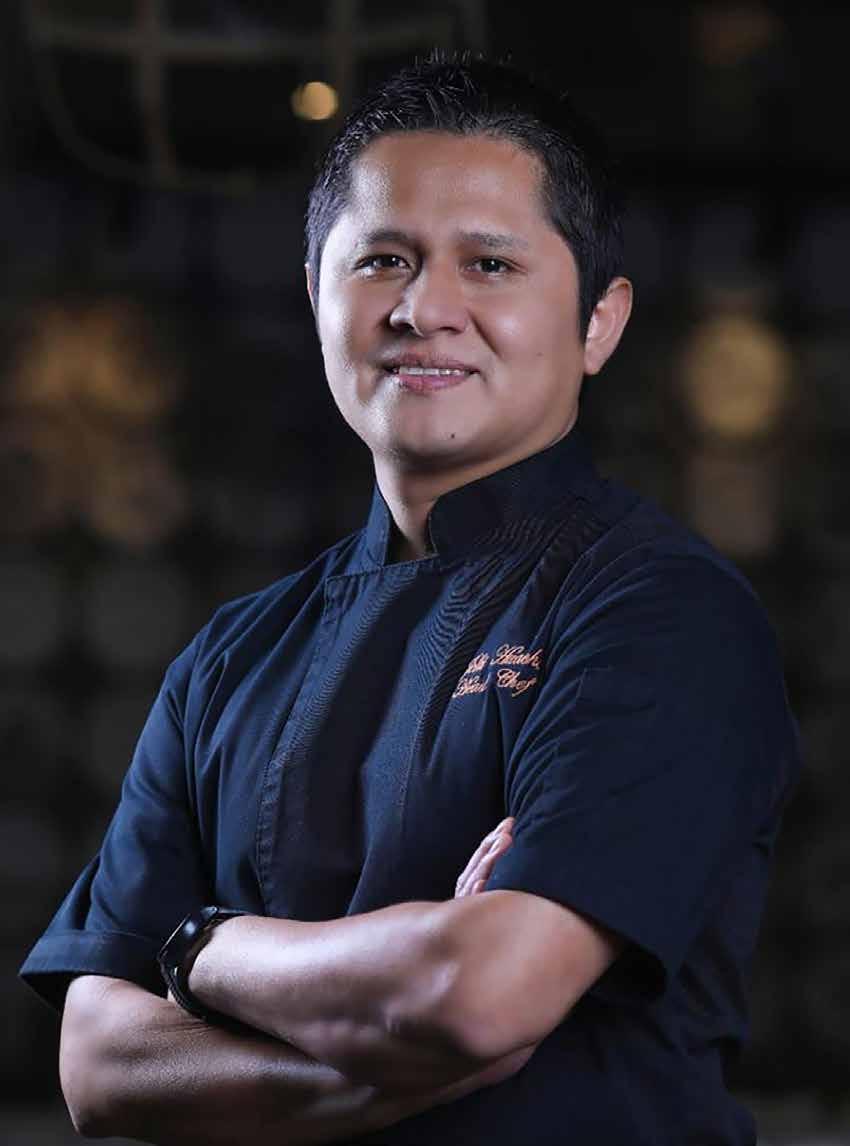
10am
After my workout, I prepare myself and my essentials for work. This includes organizing my kitchen gear, reviewing my schedule, and planning the day. As the Head Chef of two popular homegrown concept restaurants in Dubai—Sushiyaki at Souk Madinat Jumeirah and CLAY at Bluewaters—ensuring everything is in order before I leave helps me stay focused and efficient throughout the day.
11am
I arrive at either CLAY or Sushiyaki, depending on the day. At CLAY, we offer Peruvian-Japanese Nikkei cuisine, a style that originated when Japanese immigrants brought their culinary traditions to Peru and blended them with local ingredients. This cuisine has gained popularity over the past 20 years, and we continue to innovate by incorporating Japanese, Peruvian, Thai, and Indonesian flavours. At Sushiyaki, we focus on traditional Japanese cuisine with a subtle Peruvian influence. As a Peruvian, it brings me great joy to introduce our unique dishes to the Dubai dining scene.
11:15am
After arriving at the restaurant, I check all the kitchens to ensure everything is in order. This includes verifying sauces and supplies. Around this time, we usually receive new materials and ingredients, I ensure that everything is set as per the regulations. I also check the temperatures of the chillers and taste the sauces. Maintaining our high standards of quality and safety is non-negotiable. I'm grateful to have an extremely disciplined and passionate team—most of these crucial tasks are completed before I even arrive.
12pm
Our restaurants open, and that's when the real action begins. I’m cooking, testing, plating dishes, and ensuring everything runs smoothly. Discipline is key in the kitchen— everyone knows their role, and it’s a team effort to deliver the best dining experience to our guests.
4-6pm
I take a much-needed break. This time allows me to relax, recharge, and catch my breath. A short break helps me return to the kitchen with renewed energy and focus, ready for the evening rush.
6pm
The night service begins, and I'm back in the kitchen, testing sauces, cooking, and plating dishes. The evening is always exciting, and I thrive on the hustle and bustle of the kitchen. Having worked in the industry for many years, I always advise my juniors to be sponges—absorbing all the techniques and skills used by their peers. There's always something new to learn amidst the fast-paced environment.
8pm
We’re in full swing, and I’m savouring every moment. I love the challenge of ensuring every dish is perfect. Since Peruvian cuisine is not widely known in this region, one of the most rewarding experiences is receiving great feedback from first-time diners.
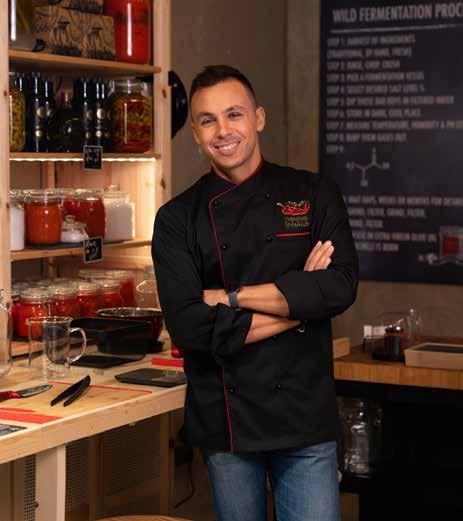
Can you share the story behind the creation of Tabchilli?
Tabchilli was born from a passion for fermentation and a desire to introduce healthy, flavourful, and probiotic-rich foods to our community. What began as a hobby—experimenting with various fermentation techniques in my kitchen, including making my own vinegar, kombucha, miso, and signature hot sauce—revealed the immense health benefits and unique flavours of these foods, which were lacking in the local market.
This passion evolved into a business idea, leading to the establishment of Tabchilli to share our love for fermented foods.
What led you to specialise in fermentation?
The specialisation in fermentation stemmed from recognising the incredible health benefits these processes offer. Also, the flavours of fermentation cannot be made with fire, only with microbes and bacteria. Fermented foods are not only delicious but also packed with probiotics that promote gut health.
What made Dar Wasl Mall the ideal location for your shop?
Dar Wasl Mall was chosen for its vibrant community and its support for local businesses. Its central location in Dubai makes it accessible to a wide range of customers who appreciate quality and health-conscious products.
What health benefits do your fermented products offer, and how do you inform consumers?
Our fermented products are rich in probiotics, which support a healthy gut microbiome, improve digestion, and boost the immune system. They are also packed with vitamins, minerals, and antioxidants that contribute to overall well-being. We inform our consumers about these benefits through informative labels, engaging social media content, workshops, and in-store educational materials. We believe in empowering our customers with knowledge about the food they consume.
What process do you follow to experiment with and develop new flavours?
Experimentation is at the heart of Tabchilli. We start with traditional recipes and then explore various combinations of spices, herbs, and vegetables. We taste test in small batches, adjusting the ingredients to achieve the desired flavour profile. Feedback from our customers plays a crucial role in refining our products.
How do you decide on market offerings?
We carefully analyse market trends, customer feedback, and sales data to decide which products to offer. We also engage with our community through surveys and tasting events to understand their preferences. This customer-centric approach ensures that we meet the demands of our market while staying true to our commitment to health and quality.


In what ways do you incorporate sustainability into your production processes?
Sustainability is a core value at Tabchilli. We source our ingredients locally to reduce our carbon footprint and support local farmers. Our packaging is ecofriendly, and we strive to minimise waste throughout our production process. Additionally, we use all parts of the vegetables whenever possible and compost any waste. Our commitment to sustainability extends to educating our customers on how to reduce excess food waste through fermenting at home.
What upcoming trends do you anticipate in this industry?
We anticipate a growing interest in exotic and fusion flavours as consumers become more adventurous with their taste buds. There is also an increasing demand for plant-based and vegan fermented products. The focus on gut health and the benefits of probiotics will continue to drive the popularity of fermented foods. Innovations in fermentation techniques and the use of functional ingredients like superfoods and adaptogens are also expected to trend in the industry.


What are some of the main challenges you encounter in the fermented foods industry?
One of the main challenges is educating consumers about the benefits of fermented foods and overcoming the misconception that all bacteria are harmful. Maintaining consistency in the fermentation process can also be challenging due to variables like temperature and ingredient quality. Additionally, sourcing high-quality, organic ingredients locally can sometimes be difficult and costly.
Are there any new ingredients or techniques that you are particularly excited to try?
We are excited to experiment with fermentation techniques that use fungus spores, such as koji, to make miso, garum,
and other products. We are also exploring the use of ancient grains and seeds in our products to add nutritional value.
What is your long-term vision for Tabchilli?
Our long-term vision for Tabchilli is to become a leading name in the fermented foods industry, known for our commitment to quality, health, and sustainability. We aim to expand our product line, open additional retail locations, and establish a strong online presence. To achieve this, we will continue to innovate, educate our customers, and build strong relationships with local farmers and suppliers. Our goal is to inspire others to embrace the benefits of fermented foods and to promote a healthier, more sustainable way of eating.
The highly anticipated Salon du Chocolat et de la Pâtisserie Dubai is set to captivate tens of thousands of visitors from September 18-20, 2024, at Madinat Jumeirah

Celebrating its third edition this year, the event will feature 360 international and local brands, represented by 120 exhibitors, showcasing the latest in pastry and chocolate craftsmanship. Highlights include the enchanting Chocolate Fashion Show, featuring 13 stunning chocolate dresses created by executive pastry chefs and talented students from Esmod Dubai, themed "Wild & Wonderful Glamour."
The event also features The Talks, a series of insightful sessions with industry leaders discussing trends in pastry, chocolate, and coffee, alongside a focus on sustainability with UNEP’s talk on food waste. The Coffee in Good Spirits Championship, in partnership with the Specialty Coffee Association-UAE, will showcase the innovative skills of baristas and mixologists.
With 43 competitions and masterclasses, including the Best 3D Cake Design and the KITKAT Dessert Challenge, Salon du Chocolat et de la Pâtisserie Dubai promises an immersive experience. The Pastry Show will offer workshops with world-renowned executive chefs, while Choco Demo
will feature live culinary demonstrations and unique drink pairings curated by experts.
Since its inception in Paris nearly 30 years ago, Salon du Chocolat et de la Pâtisserie has grown into a global event, now held in major cities such as New York, Tokyo, London, and beyond, continuing to set the standard for chocolate and pastry innovation worldwide.



Michelin-starred chef, author, and CEO of Food Concepts 360, Conrad Gallagher, on the art of harmonising culinary creativity with business acumen
Being a chef is like being a painter, where each dish is a canvas and creativity provides the vibrant colours. However, it's the frame of business acumen that ensures the masterpiece is appreciated and profitable. Balancing these elements is essential for any chef aiming to transition from the kitchen to the boardroom.
As an aspiring young chef, I trained under haute cuisine legends – Paul Bocuse in Lyon, Laurent Manrique, Daniel Boulud in New York, and Alain Ducasse in Monaco, honing my culinary flair and learning the integral secrets of the restaurant business.
Opening and operating my own restaurants in Dublin, London, New York, Las Vegas and South Africa, further enhanced my hands-on understanding the industry from concept and start-up, through financial management to sustaining customer delight and engagement. Through this extensive experience I found some stark differences between the various goegraphical locations, alongside some universal truths that cannot be ignored.
One of the main things I notice across the board is the dual role of chefs as both artists and entrepreneurs deeply influences their daily operations and decisionmaking processes. Successful chefs must continually balance their passion for culinary artistry with the practicalities of running a profitable business. You cannot

entice denizens and create wonders on the palate only and expect to be successful. This requires a blend of creativity, strategic thinking, and strong leadership skills to navigate the complexities of the competitive culinary world. A chef as an artist must create innovative and visually appealing dishes, while as an entrepreneur, they must consider ingredient costs, pricing strategies, and customer preferences to ensure profitability. It is a tricky blend of ingredients to get right.

During my career I have been fortunate to spend a large chunk of my time and experience in the GCC, primarily the United Arab Emirates and Saudi Arabia. The region is a tough nut to crack; not everyone understands the unique challenges and opportunities faced by chefs in the Middle East, and launching your brand or expanding into certain markets can be a double-edged sword.
For instance, the region offers a vibrant culinary landscape, but also comes with its own set of complexities that chefs must navigate to really shine and capture the attention of the populace. For example, ensuring all food meets Halal standards affects fundamentals of the trade, including ingredient sourcing, preparation, and kitchen practices. Then the limited use of alcohol in cooking and strict regulations on alcohol consumption and sale in restaurants can complicate things further,
in particular with fine dining and haute cuisine circles. Additionally, chefs must adapt menus to cater to local tastes and preferences, which may differ significantly from Western cuisines. The hot climate impacts ingredient storage and shelf life, necessitating efficient cold chain logistics and kitchen management. The limited availability of certain fresh ingredients requires chefs to be adaptable and creative with substitutes. High costs of rent, utilities, and labour in major cities like Dubai, Abu Dhabi, and Doha, along with fluctuations in the tourism industry affecting

customer footfall and revenue, add to the complexities. Adjusting operations during Ramadan, including modified working hours, menu offerings, and service styles to accommodate fasting practices, is another critical aspect.
As alluded to earlier, the hospitality sector in this region also offers numerous opportunities for chefs. These include working in the world’s most prestigious hotels and resorts known for their
gourmet dining experiences, launching or managing signature restaurants in high-profile venues, some of which host a multitude of epicurean elegance, and entering the growing food truck and street food market. The regions diverse expatriate population creates demand for a wide range of international cuisines, allowing chefs to showcase their culinary chops and versatility. Specialising in dietary-specific cuisines such as vegan, gluten-free, and keto-friendly menus is another growing area. The rapid career progression in this dynamic and growing
sector, from junior positions to executive chef roles, provides further opportunities for advancement.
The foodservice market, particularly in cities like Dubai and Abu Dhabi, has shown significant growth driven by the booming tourism sector. These cities' reputations as global tourism hubs have seen substantial investment in both fine dining and casual dining establishments. Saudi Arabia holds the largest share in the regional foodservice market, with rapid expansion in the number of food outlets, particularly in shopping malls. The recovery post-pandemic has influenced new opportunities for culinary entrepreneurs. The pandemic accelerated the adoption of food delivery services, partnerships with delivery platforms, and emphasised the importance of a strong online presence. There is a growing demand for healthy, organic, and sustainable food options. Entrepreneurs can capitalise on this trend by offering menus focusing on wellness, including plant-based, organic, and locally sourced ingredients. Flexible business models, such as pop-up kitchens, food trucks, and seasonal operations, can help adapt to changing market conditions.
Common reasons for the high failure rates among new restaurants include poor location, inadequate market research, poor financial management, lack of experience, poor marketing and branding, operational challenges, economic factors, and poor customer service. Strategic management and planning can help mitigate these risks. Conducting detailed site selection studies, gathering data through surveys and focus groups, and conducting feasibility studies are crucial steps. Creating detailed budgets, conducting regular financial reviews, and employing experienced restaurant managers can improve efficiency and consistency. Comprehensive training programs and integrated marketing strategies are also essential for success.
Aspiring chef-entrepreneurs should focus on incorporating and respecting local culinary traditions, conducting thorough research, sourcing high-quality ingredients, investing in comprehensive training programs, developing signature dishes, defining their brand's values, and adopting sustainable practices. By leveraging emerging trends, embracing technology, and focusing on sustainability and customer engagement, chefs can position themselves for success in a competitive and evolving culinary landscape.

Lily Hoa Nguyen, Owner and Executive Chef at Vietnamese Foodies, highlights common mistakes made by F&B brands and suggests strategies for improvement

In the highly competitive F&B industry, building brand loyalty is more crucial than ever. Lily Hoa Nguyen, Owner and Executive Chef at Vietnamese Foodies, knows this firsthand. With her deep-rooted passion for authentic Vietnamese cuisine and experience in the global culinary scene, Lily has successfully expanded her brand across Dubai, leveraging social media to connect with customers and foster loyalty.
As Lily observes, social media is much more than just a marketing tool; it’s a dynamic space where brands can engage directly with their customers in real-time conversations, listen to feedback, and build a community around their services.
“Engaging with customers on social media helps to build trust, enhance brand loyalty, and boost sales,” says Nguyen. “When done right, these interactions can turn casual followers into loyal customers. However, a poorly managed presence might have the opposite effect and damage a brand’s reputation.”
With this understanding, Lily sheds light on common mistakes F&B brands make and strategies for improvement.
One of the biggest mistakes F&B brands make is failing to engage with their audience authentically. Recently, many brands have heavily focused on advertising content, pushing products and promotions without trying to create meaningful interactions with their followers, which leads to a lack of genuine engagement.
This approach can make the brand seem more interested in doing business than in building relationships, leading followers to distrust the brand.
Authenticity is key to building trust between followers and the brand. When brands foster genuine conversations, share behind-the-scenes stories, and show the human side of their operations— such as introducing team members and highlighting the brand’s commitment to sustainability—they demonstrate that they value the connection with their audience beyond sales. Authenticity can be demonstrated through storytelling, user-
generated content, and a consistent brand image that resonates with their target audience, making them feel relatable.
Another common pitfall is inconsistent posting. Whether due to a lack of resources, poor planning, or simple oversight, failing to maintain a regular schedule can significantly reduce a brand’s visibility on social media platforms. Customers expect consistent content and irregular posting can make a brand seem unprofessional and disengaged, which may cause the brand to be forgotten by its audience.
Consistency is crucial for maintaining audience interest and keeping the brand top-of-mind. Developing a content calendar that aligns with the brand’s marketing goals and audience preferences can help ensure a steady flow of relevant and engaging content that aligns with their audience’s interests and preferences. This strategy keeps the audience engaged while reinforcing the brand’s presence on social media.
Content quality is another aspect that many brands need to improve. Given the visual nature of platforms like Instagram and Facebook, low-quality images, videos, or poorly written posts can diminish the brand’s professional image and deter potential customers.
Investing in professional photography, videography, and well-crafted copywriting can make a significant difference in how a brand is perceived. Showcasing beautifully plated dishes, vibrant ingredients, and the ambience of the dining experience can entice customers and enhance their perception of the brand. Additionally, the relevance of the content is also essential. Creating content based on current trends, events, and customer interests, such as themed content related to occasions or offering special menus and deals, will promote brand engagement.
Ignoring customer feedback is another significant mistake. Social media is a two-way communication channel between brands and their audience. Therefore, brands that fail to acknowledge or respond to customer comments, complaints, or suggestions risk losing
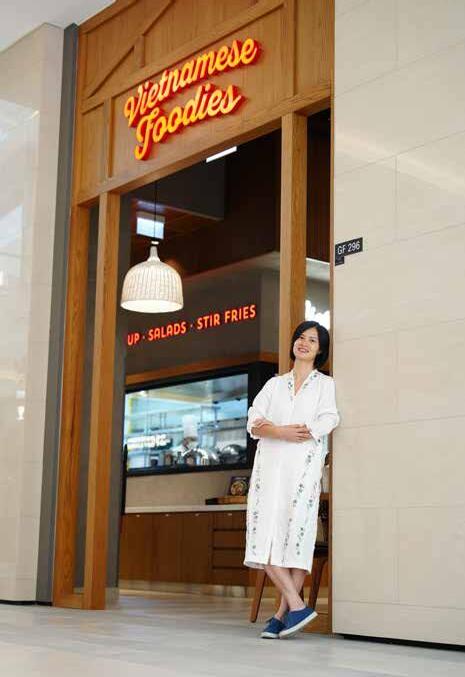
followers, as customers who feel unheard or unappreciated are less likely to remain loyal to the brand.
Active listening and timely responses to customer feedback are essential for effective social media management. F&B brands should not only respond to comments and messages but also proactively seek out customer opinions through polls, surveys, and interactive content such as Q&A sessions. Addressing customer concerns promptly and publicly shows that the brand cares about its customers, values their opinions, and
is committed to their satisfaction. This approach both helps the audience feel appreciated and offers valuable insights into customers' preferences and areas that could benefit from improvement.
Building brand loyalty in the F&B industry requires a strategic focus on authenticity, consistency, responsiveness, and high-quality content. By effectively leveraging these elements, brands can turn social media into a powerful tool for cultivating and sustaining customer loyalty, positioning themselves for success in a competitive market.
THE BEST DISHES CURRENTLY ON MENUS AT RESTAURANTS ACROSS DUBAI – AS CHOSEN BY CHEFS

What is the signature dish on the menu?
Our signature dish is the DREAM Seafood Ravioli, featuring delicate homemade ravioli stuffed with a blend of lobster, prawns, and salmon, served in a light, creamy lemongrass wine sauce.
Are there any personal or cultural influences behind this dish?
This dish reflects our Mediterranean cuisine focus, incorporating Italian influences. The seafood ravioli pays homage to the Mediterranean coast, known for its exceptional seafood. It represents the rich culinary traditions of the region, where the freshest seafood is sourced and expertly prepared.
Are there any unique techniques or cooking methods used in preparing this dish?
We handcraft each ravioli in-house, as the executive chef, I prepare each piece individually to ensure perfect quality and flavour. The ravioli is filled with a carefully balanced mixture of lobster, prawns and salmon. The accompanying lemongrass wine sauce is made from scratch, using a slow reduction process to develop rich, complex flavours.
What sets your version of this dish apart from others?
Our version stands out due to the freshness of the seafood filling and the meticulous preparation of both the ravioli and sauce. The use of premium lobster, prawns, and salmon, along with the homemade approach, ensures a level of craftsmanship and attention to detail that sets this dish apart.
What do you hope people feel or experience when they taste this dish for the first time?
We hope diners experience a sense of indulgence and delight, enhanced by the full DREAM Dinner Show experience. From our commitment to service excellence and highest food quality to our in-house production that features an incredible lineup of acts including international artists, we aim to offer an unforgettable evening that combines world-class dining with entertainment.

Yannick Alléno's latest opening, L'Abysse Monte-Carlo, celebrates zero-waste dining with an emphasis on fresh Mediterranean produce
Yannick Alléno needs no introduction. The globallyrenowned chef is famed for his ability to merge tradition with cutting-edge techniques. With multiple Michelin stars to his venues, including three at his flagship restaurant Pavillon Ledoyen in Paris, Alléno is revered for pushing the boundaries of French cuisine. His work combines deep respect for culinary heritage with a passion for innovation, resulting in dishes that are both refined and groundbreaking. Alléno's influence reaches beyond his restaurants, as he continues to shape the future of gastronomy through his books and thought-provoking culinary philosophies. Here we discuss his latest opening in Monte-Carlo.
How has your culinary journey evolved from the early days to being a Michelin-starred chef?
I've been lucky enough to meet some wonderful people along the way who have helped me realise my ambitions. What always stays the same is the desire to do things well and thoroughly, with constant attention to detail. That's what makes the difference in the end. And when you believe in something, never give up.
What inspired you to create L'Abysse Monte-Carlo?
I wanted to get closer to the Mediterranean Sea. I created the first L’Abysse in Paris, and when I came to
Monaco, I fully immersed myself in the region. I'm also fascinated by Japan - I must have been there 40 times! L'Abysse Monte-Carlo is a blend of my expertise in French cuisine and that of sushi master Yasunari Okazaki. Together, we create a unique dialogue with Mediterranean produce at its heart. There are no borders while exploring this terroir, and I wanted us to seek out the most unlikely fish, such as the moray eel.
Can you share the vision and what you hope to convey through this novel experience?
My vision is to bring the awareness of seasonal and local fish and the richness of Mediterranean waters to the forefront. Our creations evolve with the catch of Monegasque fishermen, and we have embodied this in the gyotaku technique. Historically, Japanese fishermen tracked their catches by coating them with ink and pressing them onto washi paper as a keepsake. This memorable imprint is something we share with our customers, serving as a reminder of the importance of responsible, seasonal fishing.
Can you share a moment when your emotions significantly influenced a dish you created?
When I create a dish, I'm more interested in the product and taste. Emotion comes after and is the consequence of this research, of this accomplished work. Creating emotion is, of course, the



greatest reward of all when you're cooking. The dishes, the service, the atmosphere, the place - each element is important. At L'Abysse Monte-Carlo, we start the menu with what I call “salty emotions” before giving way to the nigiri collection.
What unique elements or signature dishes can diners expect?
You have to experience the moment in its entirety through one of our two menus: Empreinte or Omakase. Whether you choose one or the other, you begin a journey in which sauces and extractions are paramount and come into dialogue with Mediterranean and Japanese products. I'm thinking of the whole sole, which is the quintessence of the product and a perfect illustration of the Japanese neutrality of taste.
How do you approach sustainability in your culinary practices?
We work closely with local fishermen who respect the environment. Fish are caught after studying and accounting for their reproductive cycles, and the fishing methods used do not alter the seabed. In the restaurant, we utilise the whole product, every part of the animal. We also use raw, durable materials such as wood and ceramics. We don't use plastic; our preparations are done in earthenware pots.
Can you share your philosophy on sourcing ingredients and how it influences the menu?
In Monaco, we're fortunate to be between the sea and the mountains. Our fruits and vegetables come from the Monegasque hinterland and local markets. Locally caught fish, sourced using environmentally friendly methods, heavily influences our dinner menu. Squid, horse mackerel, capon, bass, dentin, St. Pierre, and red tuna are just some of the fish you can find at dinner.
Can you recount a significant failure in your career and how it shaped you as a chef?
It's not a failure in the strict sense of the word, but when I first arrived at Pavillon Ledoyen, François Simon, the eminent gastronomic critic, published an article on gourmet restaurants stating that all chefs cooked more or less the same thing. At the time, I grumbled; it was a blow to the ego. However, with a little hindsight, I realised he was right. That's when I truly developed my culinary identity. You could say I became a chef at 40.
What legacy do you hope to leave for the next generation of chefs?
Auguste Escoffier was a reformer of French cuisine, and his legacy includes many things about cooking and service codes. With this in mind, I'm making my contribution to the edifice by providing answers to contemporary challenges:
If you could create a culinary dream team of chefs (living or deceased), who would you include?
Alain Chapel and Auguste Escoffier!
Your favourite restaurant
I am particularly fond of the restaurants by Mallory Gabsi and Martino Ruggieri. Mallory is a young talent whom I've been fortunate enough to meet. He's a dedicated worker, and I greatly admire his cuisine and mindset. Martino worked alongside me for several years at the three-star Pavillon Ledoyen, and I am incredibly proud of him and what he has accomplished.
Favourite song and artist on your playlist
I don't really listen to music while I'm cooking, but I do like Mika and his songs, and this boy has truly touched me.
Outside of the kitchen, what are some moments that you savour?
It is being at home in Italy and enjoying time with my family.
Do you have any rituals that you follow before starting your day?
I kiss my wife, have a cup of coffee and then head off to the kitchen.
chocolates with a lower glycemic index, table concierge for customised and personalised service, sauces that are less fatty and more straightforward thanks to extraction processes, I believe that cuisine must evolve with its time and its era. Passing on knowledge is an integral part of our mission, and I've trained around a hundred talents in the restaurant business, including some thirty chefs who now have Michelin stars. They will have the restaurants of tomorrow, and I take great pleasure in supporting them in developing their skills and advancing their careers.
Are there any upcoming projects or collaborations you’re excited about?
L'Abysse Monte-Carlo is already a fantastic project that brings me joy and pride; having said that, I'm always thinking about the next step. Stay tuned!


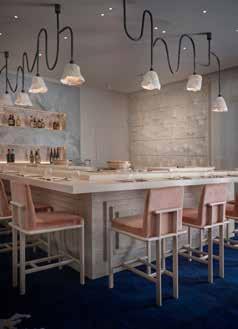


Greeneration is transforming urban agriculture with its supply of premium, bespoke edible flowers, and microgreens for the HoReCa sector

Greeneration harnesses advanced agricultural technologies to symbolise sustainability, minimising environmental impact while offering fresh, locally sourced ingredients. As a specialityoriented farm, Greeneration focuses on cultivating rare, premium full leaves that are highly appreciated by chefs, setting it apart in the UAE market where most farms only grow microgreens. Greeneration's offerings include edible flowers such as Calendula, Dianthus, Borage, Balsamina, Begonia, Cornflower, Buzz Buttons, Torenia, and Nasturtium. The microgreens range features Basil, Beetroot, Mizuna, Sorrel, Daikon, Fennel, and more, while its specialty leaves include Oxalis, Watercress, Tagetes, Verbena, and Shiso, to name a few. Additionally, Greeneration extends an invitation to chefs, to explore their state-of-the-art facility in Dubai Industrial City, often likened to a "7-star resort for greens." These visits provide an opportunity to observe cutting-edge vertical farming techniques firsthand, where chefs can personally select and sample the freshest produce straight from the source.
Greeneration has established key partnerships with some of Dubai’s most prestigious Michelin-starred chefs and restaurants, elevating the fine dining experience for guests seeking a gourmet journey in the UAE. These collaborations are made possible through Greeneration's state-of-the-art vertical farming techniques, which guarantee that all products are fresh, pesticidefree, and ready for consumption, surpassing the high standards of both fine dining and eco-conscious venues.
“We are excited to work with leading chefs and restaurants in Dubai. Our goal is not only to supply the finest locally grown ingredients and support sustainability but also to be a true partner to chefs, helping them achieve new heights with our distinctive and flavourful products,” said Roman Ulyanov, Founder of Greeneration.



A major advantage of Greeneration’s approach is its hyperlocal hydroponics vertical farming system. By growing and delivering locally, it eliminates the need for long-distance transportation, which is typically associated with importing flowers and specialities—an expensive and CO2-intensive process. This localised approach drastically reduces CO2 emissions and conserves up to 98% more water compared to traditional farming methods. The controlled environment of vertical farming also eliminates the need for harmful pesticides and herbicides, ensuring that the produce is clean and safe for consumption.
Greeneration’s commitment to sustainability extends beyond its farming methods. The company provides a "farm-to-kitchen" delivery service within Dubai, ensuring that produce arrives on the same day it is harvested. This practice guarantees maximum freshness and nutritional value, allowing chefs to seamlessly incorporate top-quality, unique, and sustainable ingredients into their menus.
Meet Chef Muhamad Noer Abdi, whose Indonesian roots and deep passion for Japanese cuisine infuse TŌRI with his extensive culinary expertise
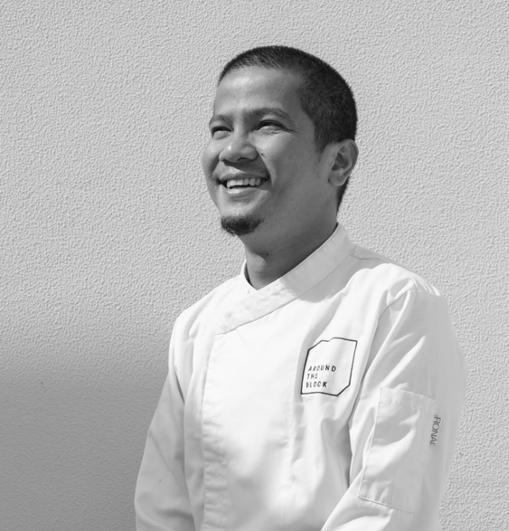
With a passion for Asian cuisine and a deep appreciation for Japanese culture, Chef Muhamad Noer Abdi brings a wealth of experience to TÕRI. Born and raised in Indonesia, Chef Abdi's journey into the culinary world began with a Diploma in Tourism Management from ARS International University in West Java. This early foundation provided him with a global perspective and an understanding of
diverse culinary traditions, which he has skillfully integrated into his cooking style.
Chef Abdi's career began with an apprenticeship at the Four Seasons Resort in Jimbaran, Bali, where he developed a strong interest in Asian cuisine. His career quickly progressed, leading him to prestigious kitchens across Dubai, including PierChic Restaurant at Al Qasr Hotel, Qbara Restaurant, Intersect by Lexus Dubai, and Weslodge Saloon Dubai. His work at the latter two earned them
recognition in Esquire Magazine Middle East's top 50 best restaurants in the Gulf. Chef Abdi's reputation in Dubai's kitchens eventually led him to the role of Group Head Chef at Around the Block.
In 2019, Chef Abdi joined the opening team of Around The Block, where he played a key role in the creative development of the group’s home-grown brands, including Fat Uncle, Room1618, and GIMI. In 2023, he launched the first dual restaurant concept in Mirdif at Al Khawaneej Walk, featuring Around the Block by day and TÕRI, a modern Japanese eatery, by night. This successful concept was later expanded to a second location in Wasl 51.
As the Group Head Chef at TÕRI, Chef Abdi combines his extensive experience with a passion for Asian cuisine.
TÕRI focuses on sharing-style plates, encouraging diners to enjoy communal eating, a tradition deeply rooted in Japanese culture. His menu reflects his creativity, featuring dishes with bold tastes and innovative presentations that engage and surprise guests.
In this exclusive interview, we explore the creative mind of Chef Muhamad Noer Abdi on his philosophy on balancing dual restaurant concepts, how his Indonesian heritage has influenced his approach to Asian cuisine at TÕRI, and his journey in developing brand identities.
How has your Indonesian heritage influenced your approach to Asian cuisine, particularly in a Japanese context at TŌRI?
Indonesian and Japanese cuisines are distinct, but there are interesting overlaps and influences. Indonesian cuisine is known for its bold flavours, complex spice blends, and rich use of ingredients like chilli, lemongrass, galangal, and coconut. In contrast, Japanese cuisine often emphasises subtlety, freshness, and umami, with ingredients like miso, soy sauce, and dashi.
Some of the ways these influences come into play include:
1. Spice usage: Indonesian cuisine's reliance on spices and aromatic ingredients may lead to experimenting with Japanese dishes by incorporating spice pastes or blends.
2. Flavour balance: The Indonesian approach to balancing sweet, salty, spicy, and sour flavours might inspire innovative takes on traditional Japanese dishes.



3. Cultural fusion: Techniques or presentations from Indonesian cuisine could be creatively integrated into Japanese dishes. Blending Indonesian boldness with Japanese subtlety could result in exciting and fresh culinary experiences, showcasing how diverse influences can harmonise in the kitchen.
As Group Head Chef, you’ve led the creative curation of several homegrown brands. How do you approach developing a brand’s culinary identity from the ground up?
Developing a brand's culinary identity

requires a mix of creativity, strategic thinking, and a thorough grasp of culinary arts and market trends. I begin by understanding the brand’s vision and core values, which provides a foundation for the process. Next, I conduct comprehensive market research and analysis to inform our strategy. Defining a clear culinary concept follows, which is then supported by crafting a compelling brand story.
Throughout this process, I remain open to feedback and willing to adapt, ensuring that the culinary identity we create is both distinctive and relevant. This approach
helps to establish a unique presence that resonates with our audience and stands out in the competitive food industry.
What was the inspiration behind the dual restaurant concept of Around the Block by day and TŌRI by night?
How do you balance the distinct identities of these two culinary experiences within one space?
Around The Block, launched in 2019, is a pioneering multi-concept F&B destination offering a fast-casual restaurant experience alongside a speciality coffee concept. With
When you're not in the kitchen, where do you love to dine in the UAE?
When I'm not in the kitchen, I enjoy dining at various restaurants and trying their menus. I love Wakha Restaurant in Al Barsha for Afghan food, Daikan in Nakheel Mall for ramen, and Dapoer Kita in Karama for Indonesian food.
What’s the one dish you could eat every day and never get tired of?
Fried tofu is the one dish I could eat every single day without getting tired of it.
If you could cook for any celebrity or historical figure, who would it be, and what would you serve them?
I’m a huge fan of The Rolling Stones. If I ever had the opportunity, I’d love to cook for them and serve the best of my creations from my culinary journey.

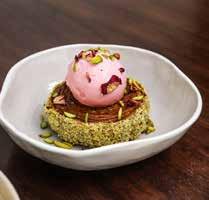
My approach to leadership focuses on creativity, innovation, and resilience for long-term success and growth.
branches in strategic locations like Al Khawaneej Walk, Wasl 51, and Sharjah’s House of Wisdom, Around The Block has become a culinary destination for discerning food enthusiasts.
TÕRI, a modern Japanese eatery by night, is another successful concept that expanded to Wasl 51. This venture is a fusion of Japanese spice and Southeast-Asian street food. With a deep understanding of both cuisines and their target audiences, I balance these distinct culinary experiences within a single space by carefully curating the menus for each, ensuring authenticity and complementing both dining experiences.
What are your favourite dishes at the venue and why?
From our TÕRI menu, my favourite is Indomie, as it is a comfort food I can enjoy at any time of the day. I also love the Grilled sweet corn and Lobster fried rice.
The Grilled sweet corn has a good balance of sweetness, umami, spice, and the smokiness from the robata.
What is your process when selecting the best suppliers and produce?
We work with multiple suppliers to ensure we receive the best standard products year-round. It's crucial to maintain good relationships with all suppliers.
The process involves defining requirements, conducting market research, evaluating suppliers, comparing and analysing options, negotiating terms, and monitoring and reviewing daily.
What key experiences or challenges have shaped your culinary philosophy and approach to leadership in the kitchen?
Working in various cuisines across hotels and restaurants in Dubai, and collaborating with different chefs, has not only honed my technical skills but also provided wisdom in team management, handling stress, and maintaining creativity.
Working with diverse teams has taught me the importance of clear communication, delegation, and valuing each team member's contribution. High-pressure environments have refined my ability to stay calm under stress and make quick, effective decisions. I've also learned from criticism, which has helped improve my dishes and leadership style.
Some challenges include managing stress in fast-paced kitchen environments, dealing with supply chain disruptions, and navigating conflicts within the team.
What advice would you give to young chefs who aspire to combine their cultural roots with global culinary techniques, as you have done throughout your career?
Combining cultural roots with global culinary techniques can lead to the creation of unique and memorable dishes. To achieve this, I recommend studying traditional techniques, ingredients, and dishes from your cultural background, and understanding their history and significance. Gaining experience in different kitchens or restaurants allows you to explore various cuisines and cooking methods, which enriches your approach.
It's crucial to ensure that the fusion of techniques is harmonious, enhancing and complementing the dish rather than overpowering or clashing. Observing and learning from chefs who have successfully integrated cultural and global techniques can provide valuable insights. Finally, maintaining a curious mindset and staying open to new techniques and trends is essential, as the culinary world is constantly evolving.
What are your future goals for the brand?
Since joining Around The Block, we’ve developed several concepts, and I aim to achieve more in the future. I would like to see our brand go international and become everyone's favourite restaurant.

Discover the essence of centuries-old tradition with La Baleine, a product born from a rich heritage and cultivated within the distinctive ecosystem of Aigues-Mortes
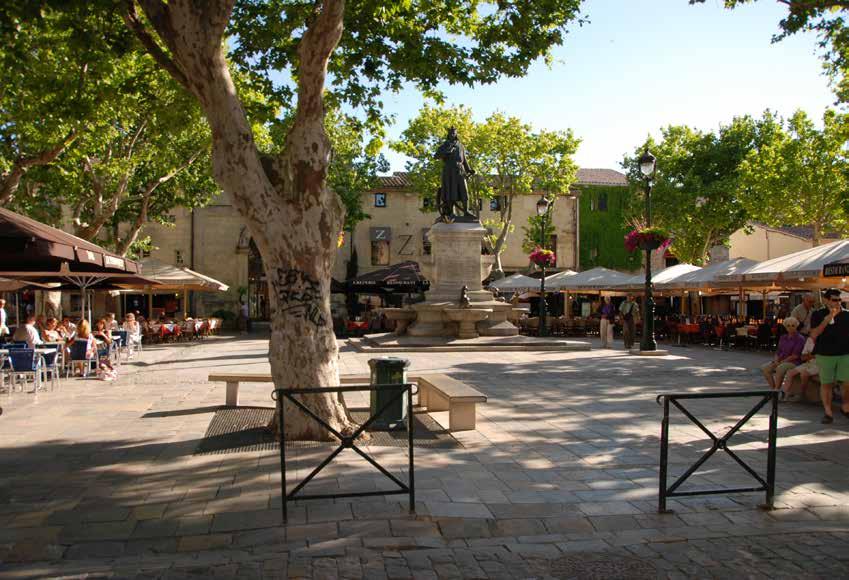


In the heart of the Camargue region lies Aigues-Mortes, a medieval gem renowned for its rich history and encircled by ancient ramparts. This storied town, a vibrant hub of activity for centuries, has been closely associated with salt production since ancient times. Salt extraction in the region, however, is documented from the Roman period rather than as early as 4 BC.
During the medieval era, King Louis IX recognised the strategic importance of
Aigues-Mortes and secured permission to build a port, transforming the town into a crucial Mediterranean gateway. This port quickly became a bustling centre of trade with Italy and the Levant, enhancing Aigues-Mortes’ prominence. Over time, the salt marshes of Camargue came under the control of both religious orders and royalty. King Philip IV was later responsible for instituting the 'gabelle,' a royal salt tax that significantly increased revenue for the crown.
The devastating floods of 1842 ultimately had a profound impact on the local salt industry, leading to the consolidation of salt producers. This resulted in the establishment of Salins du Midi in 1856, which later evolved into Groupe Salins, the esteemed parent company of the renowned La Baleine brand.
The Aigues-Mortes salt marshes span approximately 8,500 hectares, an area comparable to the size of Paris, and stand as a remarkable testament to both historical industriousness and ecological diversity. Bathed in abundant sunshine and surrounded by vast, shimmering water surfaces, this unique microclimate has fostered a thriving natural reserve. Ranking just behind tropical rainforests in

terms of biodiversity, these salt lakes are home to an array of flora and fauna.
Managed by the skilled sauniers (salt farmers), the lakes are tended with profound respect for both the ancient craft of salt production and the fragile ecosystem it supports. This exceptional environment is a haven for over 200 bird species, including more than 25,000 flamingos - who get their pink colour from beta-carotene in the microalgae Dunaliella Salina, consumed by the flamingos’ diet of shrimp.
The salt marshes are also home to approximately 192 plant species flourishing around the Mediterranean’s largest salt lagoon. Recognising its ecological significance, the area has been designated a protected natural site and is part of the European Union’s 'LIFE' programme, which focuses on the conservation and restoration of this vital ecosystem.
Founded in 1934, La Baleine has established itself as a kitchen staple for French households and has garnered international success over the years. La Baleine offers a wide array of products, from fine and coarse salts to fleur de sel, as well as mini salt and pepper mills and flavoured salts. Their range is designed to meet various culinary needs, whether in the kitchen, at the dining table, or on the go.
The traditional production process of La Baleine’s salt unfolds across a landscape of shallow basins and salt pans, where natural elements combine to produce the coveted "white gold."
La Baleine’s Fleur de Sel is a 100% natural product, harvested directly from the sea with no additives. Here’s a closer look at the journey of La Baleine’s exceptional salt:


The iconic La Baleine logo was crafted by the renowned French painter and illustrator Benjamin Rabier, who also created the renowned La Vache qui Rit logo. For La Baleine, Rabier drew inspiration from the majestic whale, the queen of the ocean, capturing its grandeur and connection to the sea. The logo's blue and white tones evoke the serene colours of the Mediterranean, reflecting the natural origins and purity of the sea salt produced by La Baleine.
To find out more, visit labaleine.com
• Preparing the Salt Tables
As spring arrives, the sauniers begin by flooding the salt tables with seawater drawn from a nearby channel, setting the stage for the natural process that follows.
• Concentration
With the warmth of the sun and the gentle push of the wind, the seawater gradually evaporates, leaving behind a concentrated brine known as 'saumure,' rich with dissolved salt.
• Crystallization
From April through September, the brine continues to evaporate, leading to the formation of a dense salt layer, typically about 9 centimetres thick. This salt cake is the result of months of careful observation and natural transformation.
• Harvesting the Salt
The salt harvest, a much-anticipated event for the sauniers, usually occurs in September, just before the autumn rains. The salt cakes are collected, scooped from the basin’s floor, and shaped into pyramids called 'en camelle' for drying.




Led by chef-owner Amin Ebra, Iranish encapsulates a narrative steeped in ancestral traditions, showcasing authentic Iranian cuisine. With a wealth of experience in the food and beverage industry, Ebra, an accomplished entrepreneur, introduces Iranish as his second culinary enterprise in the UAE, following the success of Honey (an Abu Dhabi outpost of Belgrave, an acclaimed London-based restaurant).
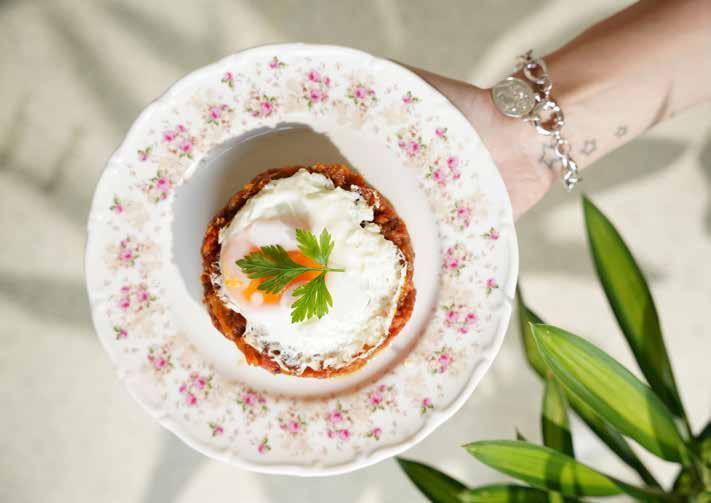
2 large eggplants
4 large tomatoes
5-6 cloves of garlic, finely chopped
2 eggs
4 tablespoons vegetable oil or olive oil
Method
Salt and black pepper to taste
1 teaspoon turmeric
1 teaspoon tomato paste (optional)
Persian flatbread for serving
1 Preheat your oven to 200°C or BBQ with charcoal. Poke a few holes in the eggplants using a fork, then place them on a baking sheet or lay them over the charcoal.
2 Roast the eggplants in the oven or BBQ for 30-40 minutes, turning them occasionally until the skin is charred and the flesh is soft. Alternatively, you can char them over an open flame on the stovetop.
3 Once roasted, let the eggplants cool slightly, then peel off the skin and mash the flesh with a fork or chop it finely.
4 Bring a pot of water to a boil. Make a small X-shaped cut on the bottom of each tomato, then blanch them in boiling water for about 1 minute. Remove the tomatoes and immediately plunge them into ice water. Peel off the skins, then chop the tomatoes finely.
5 In a large pan, heat the oil over medium heat. Add the chopped garlic and sauté until it becomes fragrant and golden, about 1-2 minutes. Be careful not to burn the garlic.
6 Add the chopped tomatoes to the pan, along with salt, black pepper, turmeric, and tomato paste if using. Cook the tomatoes for about 10 minutes, stirring occasionally, until they have broken down into a thick sauce.
7 Add the mashed eggplant to the tomato mixture in the pan. Stir well to combine. Cook the mixture for another 10 minutes, allowing the flavours to meld together. Stir occasionally to prevent sticking.
8 Fry the egg and place on top of the mirza ghasemi. Transfer the Mirza Ghasemi to a serving dish and garnish with freshly chopped parsley or basil if desired. Serve warm with Persian flatbread.
Abdoogh Khiar
2 cups plain yoghurt (Greek yoghurt)
1 cup cold water (adjust for desired consistency)
2 medium cucumbers, peeled and diced
1/4 cup raisins (optional)
Fresh herbs (mint, dill, basil)
1/4 cup chopped walnuts
2 tablespoons dried mint (or 1/4 cup fresh mint, finely chopped)
2 tablespoons dried dill (or 1/4 cup fresh dill, finely chopped)
Salt and pepper to taste
1/4 cup ice cubes (optional, for extra chill)
Garnishes (optional):
Dried rose petals
Sliced radishes
Chopped spring onions
A sprinkle of sumac
Crushed ice
Method
1 In a large mixing bowl, whisk the yoghurt until smooth. Gradually add cold water while continuing to whisk until you reach your desired consistency. The mixture should be like a thin soup.
2 Add the diced cucumbers to the yoghurt mixture.
3 Stir in the dried mint, dried dill, chopped walnuts, and raisins. If you’re using fresh herbs instead of dried, add them at this stage. Season with salt and pepper to taste. Adjust the seasoning according to your preference.
4 If you prefer a colder soup, add ice cubes to the mixture. Alternatively, you can chill the soup in the refrigerator for about 30 minutes before serving.
5 Serve the Abdoogh Khiar in bowls, garnished with fresh herbs, dried rose petals, sliced radishes, chopped spring onions, a sprinkle of sumac, and crushed ice if desired. Abdoogh Khiar is often served with pieces of Persian flatbread, such as lavash or sangak, which can be dipped into the soup.
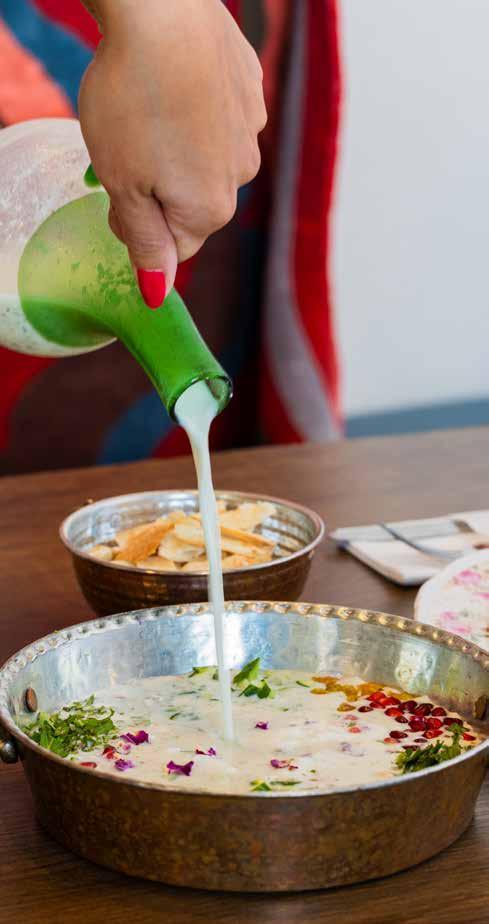


Joining our Chef's Network means becoming a cherished member of our culinary community. By signing up, you gain access to exclusive benefits, including invitations to special events, exciting product launches and more. Whether you're a seasoned chef, a budding culinary enthusiast, or a restaurateur, our network offers opportunities to connect with like-minded individuals and stay updated on the latest happenings in the world of gastronomy.
Visit theprochefme.com/chefs-network/

Cedric Vongerichten shares two signature recipes from Maritime at The Jeddah EDITION
Trained in prestigious kitchens worldwide, including the legendary three-Michelin-starred El Bulli, Cedric Vongerichten has established himself in the gastronomic world. A graduate of the Culinary Institute of America, the chef has followed in the footsteps of his father, renowned chef Jean-Georges Vongerichten. In 2019, Cédric
opened Wayan in Manhattan, an Indonesian restaurant with French influences that quickly earned a spot in the Michelin Guide. Building on its success, Ma.dé followed, highlighting Bali's seafood culture. His latest venture, Maritime, at The Jeddah EDITION in Saudi Arabia, artfully combines French and Asian flavours by the Red Sea.
Serves 12
6 half chickens, butchered steak-style, with wing bones and legs intact
Chili paste
Olive oil, for drizzling
For the Brine
4000ml water
200g sugar
320g salt
50g thyme
75g rosemary
5g kaffir lime leaves
10g kombu
For the Chilli Paste (Good for 6 half chickens)
135g long chilli peppers, seeds in 180g shallots, peeled
50g garlic, peeled
400g fresh, ripe tomatoes
40g palm sugar
80g honey
130g house-made Terasi (fermented shrimp paste)
12g salt
50g coconut oil
For the Smashed Potatoes
Baby potatoes (preferably Bangladeshi), quantity as needed
Salt, to taste
Olive oil, for cooking
Butter, for cooking
Minced garlic
Minced rosemary
Garnish:
Crispy shallots
Crispy garlic
Purple micro radish
Method
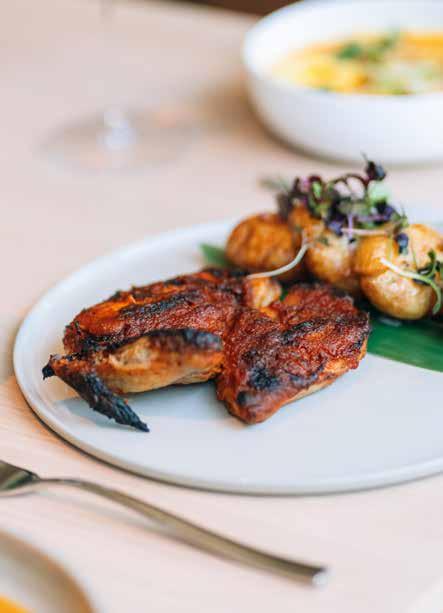
1 Mix all the brine ingredients in a large container until the sugar and salt are fully dissolved. Submerge the chicken halves in the brine and refrigerate for 6 hours. After 6 hours, remove the chicken from the brine and drain well.
2 After brining, coat the meat side of the chicken with the chilli paste and let it marinate for 1 hour.
3 Preheat your oven to 120°C (248°F). Place the marinated chicken on a baking tray with some water in the bottom. Cook for 20 minutes.
4 When ready to serve, preheat a high-temperature oven. Place the pre-cooked chicken on a tray and cook until it is caramelised. Drizzle with olive oil before serving.
5 Blend the chilli paste ingredients. Combine the long chilli peppers, shallots, garlic, fresh ripe tomatoes, palm sugar, honey, house-made Terasi, and salt in a blender. Puree the mixture until almost smooth.
6 Heat the coconut oil in a sauté pan until smoking hot. Add the chilli paste and cook until it thickens and coats the back of a spoon. Allow the paste to cool before using it to marinate the chicken.
7 Boil the baby potatoes in salted water until tender. Drain and let them air dry. Lightly smash the potatoes with the side of a knife. When ready to serve, heat a pan with olive oil and butter until foamy. Add the smashed potatoes to the pan and season with salt. Cook one side until golden brown, then flip the potatoes. Add minced garlic and cook until both the garlic and potatoes are golden. Finish with minced rosemary and serve immediately.
8. Plate the caramelised chicken alongside the smashed potatoes. Garnish with crispy shallots and garlic. Drizzle with additional olive oil if desired.
600g shrimp, deveined and roughly chopped
1g red Thai chilli, minced
20g ginger, micro planed
3g salt
8g cornstarch
Lemongrass Beurre Blanc:
30g butter (divided)
40g shallots, small diced
70g shrimp shells or lobster heads
20g lemongrass, sliced
22g ginger, peeled and sliced
1g green Thai chilli, sliced
1 piece makrut lime leaves
1g salt
115g heavy cream
50g butter
Method
1 In a mixing bowl, combine the chopped shrimp, minced red Thai chilli, ginger, salt, and cornstarch. Mix well until all ingredients are evenly distributed.
2 Take a small portion of the shrimp mixture and form it into small dumpling shapes. You can use wonton wrappers if you prefer or shape them by hand.
3 Steam the dumplings for 6-8 minutes or until the shrimp is fully cooked and the dumplings are firm to the touch.
4. In a large saucepan, melt 30g of butter over medium heat, to prep the base. Add the diced shallots, shrimp shells or lobster heads, sliced lemongrass, and ginger. Cook until the shallots are soft and fragrant, about 5-7 minutes.
5 Add the sliced green Thai chilli, Makrut lime leaves, and salt. Continue to cook for another 2 minutes, allowing the flavours to infuse.
6 Pour in the heavy cream and bring the mixture to a gentle simmer. Let it cook for about 20-25 minutes, stirring occasionally, until the sauce has reduced slightly.
7 Strain the sauce through a fine mesh sieve to remove the solids. Return the strained sauce to the saucepan.
8 Over low heat, gradually whisk in the remaining 50 g of butter, a little at a time, until the sauce is smooth and velvety. Keep warm.
9 Place the cooked shrimp dumplings on a serving plate. Spoon the warm lemongrass beurre blanc over the dumplings. Garnish with fresh herbs or a slice of red chilli for colour if desired.
10 Serve the dumplings hot with the beurre blanc as a luxurious dipping sauce or drizzled over the top.

Here’s what celebrity chefs and restaurateurs are up to
An extraordinary culinary journey awaits diners at the 2024 Formula 1 Las Vegas Grand Prix, as celebrity chef Gordon Ramsay transforms the F1 Garage into "Ramsay's Garage." Known for his renowned Las Vegas restaurants, including Hell's Kitchen at Caesars Palace, Ramsay will oversee a three-night event from November 21-23, each with a unique theme. Diners will enjoy live cooking stations by guest chefs, a pop-up of Ramsay's London restaurant "Lucky Cat," and a celebration of British cuisine with "Cool Britannia." This exclusive dining experience, priced at $35,000 (approx. AED128,550) per person, set against the thrilling backdrop of the Grand Prix, represents the realisation of Ramsay's passion for intertwining food with the excitement of Formula 1.
Distinguished Emirati Chef Sumaya Obaid, renowned for her innovative fusion of traditional Arabian flavours with global culinary techniques, will offer an exceptional dining experience within Nova Maldives’ idyllic island setting from September 7-11th 2024. Diners can participate in immersive cooking classes, where they can explore Emirati cuisine—rooted in Bedouin traditions and enriched by the spices of India and the herbs of Persia. The event will also feature live cooking demonstrations, culminating in a special beachside dinner under the stars, showcasing Chef Sumaya’s meticulously crafted signature menu. Visit nova-maldives.com/ for more information.
Aman unveils its latest dining concept, Nura, launching at Amanzoe on Greece's Korakia Beach and Amanpuri on the golden sands of Thailand. At Amanpuri, Nura is open exclusively for lunch, offering a vibrant and relaxed beachside dining experience that celebrates the essence of Mediterranean cuisine and culture. Complementing Aman's esteemed culinary portfolio, which includes Arva, inspired by Italian traditions, and Nama, dedicated to Japanese washoku, Nura upholds Aman's dedication to ingredient provenance and gastronomic heritage. Accompanied by live music that harmonises with the natural beauty and soothing rhythm of the ocean waves, Nura's menu highlights grilled specialities, tapas, crudos, salads, and pizzettes, all designed for sharing. Signature dishes include yellowtail tiradito, Manchego and black truffle croquettes, charcoal-grilled meats, and locally sourced seafood such as seabass and spiny lobster. Desserts range from seasonal sorbets to Basque cheesecake, complemented by refreshing beverages.
